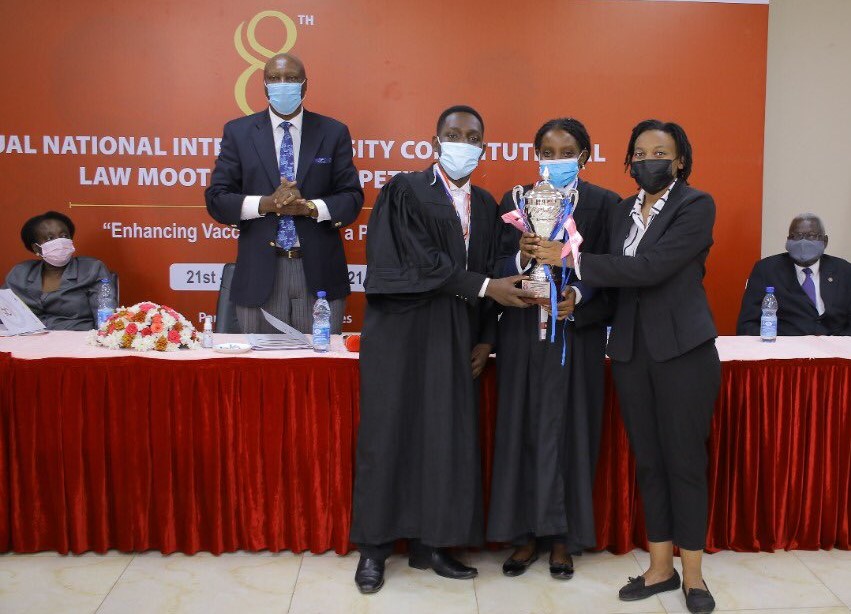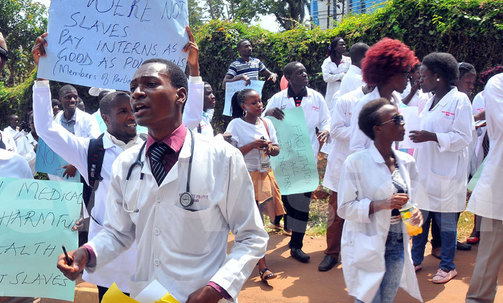“Where, after all, do universal human rights begin? In small places, close to home – so close and so small that they cannot be seen on any maps of the world. Such are the places where every man, woman and child seeks equal justice, equal opportunity, and equal dignity without discrimination. Unless these rights have meaning there, they have little meaning anywhere.”
Eleanor Roosevelt
By Ruth Ajalo | Lawyer
Before joining the Center for Health, Human Rights and Development (CEHURD), I had basic information
about the right to health. This basic information was gained while pursuing the health and the law course
unit in my fourth year at Makerere University Law School. Learning the right to health was exciting and it
set a spark within me that I desired to carry forward in my career. This did not materialise immediately after Law School but when I eventually joined CEHURD, I was excited and looked forward to learning more about the right to health and this unique area of legal practice.
At CEHURD, I have learnt, unlearnt and I continue to learn each day about the right to health and the
intersectionality of health and human rights. I can confirm that there is a lot of knowledge and exposure that the right to health brings to light. CEHURD, among other things, provides legal support to victims and survivors of sexual violence and health rights violations. It also litigates strategic cases aimed at addressing systemic gaps and bottlenecks within the provision of health services in the country.
CEHURD prepares, nurtures, and gives you a platform to shine and build your career. As a legal
practitioner, last year, I had the unique opportunity of litigating a landmark Sexual and Reproductive Health Rights case before a bench of five justices of the Constitutional Court. This is a dream come true for any young lawyer.
My experience in handling and litigating SRHR cases has been an emotional rollercoaster; it has been easy, hard, tasking, draining both physically and emotionally at times but above all, fulfilling. It is exciting to secure a win for a client and a win for the transformation in the provision of health services in the country.
Litigating SRHR cases is unique because this is not something you do without learning, unlearning,
understanding and preparing. Your mind is trained to creatively pick out the rights issues in the case and
articulate them sufficiently in a manner that reflects preparation and in-depth knowledge of the issues at
hand. Furthermore, the external lawyers we work with on some of our cases have to be oriented on the
unique aspects of the right to health and why it matters before they delve into the gist of the cases. This
calls for thorough research, preparation which continuously builds one’s mastery in the area of Health and Sexual and Reproductive health.
When a person calls the CEHURD toll-free line or walks into the office seeking help, that person is either
seeking information or is seeking for support. They are usually hurting or have suffered some form of loss
and need redress and or some form of support. Regardless of the circumstances and the facts of the case,
as lawyers we are expected to be non-judgmental, good listeners and provide the most appropriate
professional support. During the client-advocate meeting, when the client breaks down and starts to cry, the counsel must wear another hat of a counsellor and have to exercise empathy towards them. This requires that the lawyer for a moment, abandons the legal path and the knowledge acquired in Law School to concentrate on helping a client recompose through provision of Psychological first aid. This requires that for a moment, you abandon the legal package and knowledge you walked into the meeting with, and take on a new mantle of a counsellor.
We walk the journey with our clients, we counsel them, we exercise empathy, we hand-hold, we manage expectations and above all, we keep an open mind as we handle these cases. It is important to note this process also takes on an emotional toll on the lawyer and calls for selfcare. The emotional toll is largely because lawyers by training are not counsellors but in country with limited professional counsellors, any lawyer will by default provide; counselling to their clients especially when engaged in SRHR.
This type of work is not void of challenges such as the heart-breaking experiences of the clients, and being misunderstood by the public because of the nature of the work done, among others. Sexual and
Reproductive Health is a largely contested arena. Listening to clients’ experiences can get emotionally
draining because their experiences are in most cases very painful and nobody deserves to go through such grueling experiences. Furthermore, the clients are not conversant with the litigation progress and despite an effort to explain to them and manage expectations, they get burnt out and experience litigation fatigue.
Litigating human rights will certainly be difficult for any client especially if they are facing stigma,
discrimination, abuse, and isolation among others because of the delay in the disposal of their cases.
To respond to these challenges, CEHURD has invested in the provision of psychosocial support to the
legal team that handles these cases, general staff wellness and welfare to enhance the continuity of
litigation. We also share and learn amongst ourselves in the Strategic Litigation Programme with the view
of bettering ourselves. We also hold annual clients’ meetings where clients are invited for interactions and
update meetings about their cases, clients share amongst themselves and learn from each other and we
also receive feedback which we find useful for improving our service delivery.
As mentioned, we are sometimes misunderstood by the public but choose top stick to our calling trudge on nonetheless, undeterred and ever so ready to defend and stand for our clients’ rights and for system
change.
Justice for our clients comes in many forms; arrest of an accused person, sentencing (imprisonment) of an
accused person, an apology from the health worker, an explanation offered for what went wrong, an
admission of wrongdoing from the health facility or health worker among others. It is these small wins and seeing systemic changes in the provision of Health that is the power below my wings and that keeps me waking up every day to provide legal support.
Despite all the hurdles and challenges encountered, the work is fulfilling. Fulfilment is in the fact that you
helped a person and they didn’t pay you for that service; that you utilised your legal knowledge to address a human rights violation and get justice for your client. Fulfilment is the phone call from a grateful client highlighting his or her gratitude “mwebale nyo, tusimye byona bye mwakola” –” thank you very much, we appreciate everything you do for us”. Some clients call us to update us on the progress of their daughters who suffered violence to indicate that our interventions built the girl’s confidence, she returned to school and she passed her Primary Leaving Examinations (PLE).
To all human rights defenders, your work is not in vain; a step-by-step effort, a multi-sectoral approach, and perseverance will go a long way in realising a just society; a society in which people are free from sexual violence, free from health rights violations and all other violations around us. Let us persevere and keep the flame burning because society and the world at large still need us.
“Helping one person might not change the world, but it could change the world for one person” – Anonymous.






